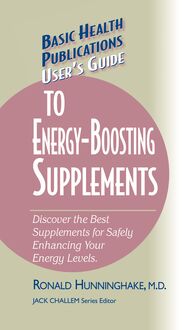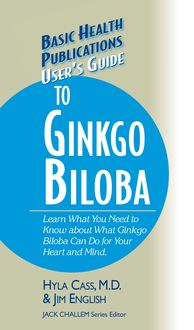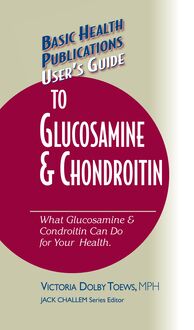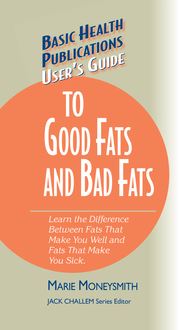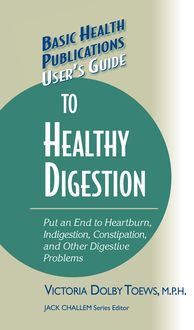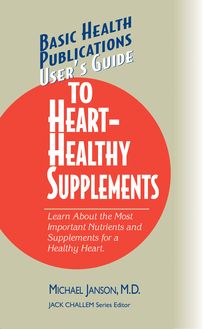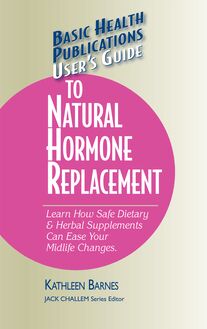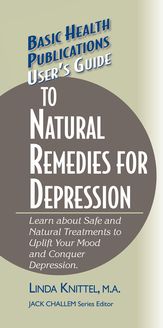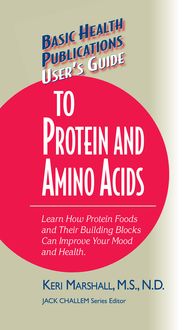-
 Univers
Univers
-
 Ebooks
Ebooks
-
 Livres audio
Livres audio
-
 Presse
Presse
-
 Podcasts
Podcasts
-
 BD
BD
-
 Documents
Documents
-
- Cours
- Révisions
- Ressources pédagogiques
- Sciences de l’éducation
- Manuels scolaires
- Langues
- Travaux de classe
- Annales de BEP
- Etudes supérieures
- Maternelle et primaire
- Fiches de lecture
- Orientation scolaire
- Méthodologie
- Corrigés de devoir
- Annales d’examens et concours
- Annales du bac
- Annales du brevet
- Rapports de stage
La lecture à portée de main
Vous pourrez modifier la taille du texte de cet ouvrage
Découvre YouScribe en t'inscrivant gratuitement
Je m'inscrisDécouvre YouScribe en t'inscrivant gratuitement
Je m'inscrisEn savoir plus
Vous pourrez modifier la taille du texte de cet ouvrage
En savoir plus

Description
Sujets
Informations
| Publié par | Turner Publishing Company |
| Date de parution | 01 janvier 2003 |
| Nombre de lectures | 0 |
| EAN13 | 9781591206316 |
| Langue | English |
Informations légales : prix de location à la page 0,0300€. Cette information est donnée uniquement à titre indicatif conformément à la législation en vigueur.
Extrait
The information contained in this book is based upon the research and personal and professional experiences of the author. It is not intended as a substitute for consulting with your physician or other healthcare provider. Any attempt to diagnose and treat an illness should be done under the direction of a healthcare professional.
The publisher does not advocate the use of any particular healthcare protocol but believes the information in this book should be available to the public. The publisher and author are not responsible for any adverse effects or consequences resulting from the use of the suggestions, preparations, or procedures discussed in this book. Should the reader have any questions concerning the appropriateness of any procedures or preparation mentioned, the author and the publisher strongly suggest consulting a professional healthcare advisor.
Series Editor: Jack Challem Editor: Roberta W. Waddell Typesetter: Gary A. Rosenberg Series Cover Designer: Mike Stromberg
Basic Health Publications User’s Guides are published by Basic Health Publications, Inc.
8200 Boulevard East North Bergen, NJ 07047 1-800-575-8890
Copyright © 2002 by Laurel Vukovic
ISBN-13: 978-1-59120-631-6
ISBN: 1-59120-035-0
All rights reserved. No part of this publication may be reproduced, stored in a retrieval system, or transmitted, in any form or by any means, electronic, mechanical, photocopying, recording, or otherwise, without the prior written consent of the copyright owner.
Printed in the United States of America
10 9 8 7 6 5 4 3 2 1
C ONTENTS
Introduction
1. Menstruation and Menstrual Difficulties
2. Pregnancy and Birth
3. Menopause
4. Preventing Osteoporosis
5. Preventing Cancer
6. Preventing Heart Disease
7. How to Buy and Use Nutritional Supplements
Conclusion
Selected References
Other Books and Resources
I NTRODUCTION
W
omen are different from men in more ways than meet the eye. The most fundamental difference can probably be summed up in one word: hormones. The same hormones that give a woman her feminine characteristics and enable her to create a child are also the cause of many of the health problems that are unique to women.
From the time a young girl’s body begins to prepare for menstruation, through pregnancy, menopause, and the years beyond, a woman’s body and emotions are influenced by her shifting hormones. Women have special needs to consider, needs that have not always been taken into account by conventional medicine and researchers. It’s only in recent years that researchers have started realizing that, although men and women share some physiological traits, women are different, and need to be treated as such.
For example, although drinking alcohol may have some positive health benefits, such as lowering cholesterol levels, it also appears to increase a woman’s risk of breast cancer. And while, for many years, women were thought to be virtually exempt from cardiovascular disease, it’s now clear that women, after menopause, have an equal, and possibly greater, risk of heart disease than men.
There is still a great deal to learn about women’s health, and researchers are attempting at this moment to find the keys to PMS, menopause, osteoporosis, breast cancer, and heart disease. Information revealing the latest findings about women’s health appears almost daily in newspapers and magazines, and much of it can be confusing and even contradictory.
What we do know for certain is that diet and lifestyle play a central role in health. It’s never too early to begin to eat well, exercise, and adopt healthful habits that will help prevent degenerative diseases such as cancer, heart disease, and osteoporosis. In fact, research shows that risk factors for these diseases begin as early as the teen years, because lifestyle habits have a cumulative effect. However, no matter what your current age or level of health, it’s never too late to upgrade your diet and lifestyle to enhance your well-being.
By reading this book, you’re taking a significant step toward improving your health and well-being. Perhaps you’re suffering from one of the common ailments that affect women, such as menstrual cramps or PMS. If you’re pregnant, you might be looking for information about how you can best care for yourself and your baby. Or you may be entering menopause, and wondering how you can smoothly navigate this significant life transition.
In the chapters ahead, you’ll discover clear and concise information that will help you to be as healthy as possible at every stage of life. You’ll find specific recommendations for common problems associated with menstruation, suggestions for a healthy pregnancy, and guidance for the menopausal years. You’ll also find comprehensive information about how you can avoid cancer, heart disease, and osteoporosis. At the end of the book, you’ll find a chapter that will help you choose, and get the most out of, dietary supplements.
Read through this book from start to finish if you want an overall guide to healthcare throughout a woman’s life. If you have a particular health concern, turn right to that chapter. By following the suggestions you find in these pages, you can begin today to improve your health.
CHAPTER 1
M ENSTRUATION AND M ENSTRUAL D IFFICULTIES
T
he onset of menstruation is a significant physiological and emotional event in a young girl’s life, and will likely be a monthly occurrence for approximately forty years. The subtle but powerful hormonal shifts that regulate the menstrual cycle can cause a variety of problems, ranging from cramps to endometriosis. In this chapter, you’ll learn the most important factors for supporting healthy reproductive function, and you’ll discover natural remedies for relieving common problems associated with menstruation.
The Basics of Menstruation
In the United States, most girls generally begin menstruating at about the age of twelve. But it’s also perfectly normal if a girl begins to menstruate as early as age ten, or as late as age seventeen. The onset of menstruation seems to be dependent upon a girl having a sufficient amount of body fat, which is related to estrogen production. Girls who exercise regularly and strenuously, such as athletes or dancers, may begin menstruating later, as may those who diet excessively.
Each month, beginning at puberty, a woman’s body prepares for possible pregnancy. The female reproductive organs consist of the ovaries, fallopian tubes, and uterus. The fallopian tubes connect the ovaries to the uterus, and are the channel through which eggs stored in the ovaries travel to the uterus. At birth, an infant girl’s ovaries hold the thousands of eggs that will be released during her fertile years.
Endometrium
The lining of the uterus, which builds up extra layers of tissue in the first phase of the menstrual cycle.
In the first phase of the menstrual cycle, the endometrium, or lining of the uterus, builds up layers of extra blood and tissue. Midway through the cycle, a ripened egg is released from an ovary. The egg passes through the fallopian tube, and if it is fertilized by sperm, the egg attaches to the wall of the thickened uterus, where it begins the process of developing into a baby. Most of the time, however, the egg is not fertilized and it simply dissolves. The extra blood and tissue built up by the uterus is shed and leaves the body through the vagina. This process continues each month until pregnancy occurs, or until ovulation ceases at menopause.
The average menstrual cycle is generally about twenty-eight days, but some women menstruate every twenty-one days, and some menstruate every forty-five days. The average menstrual period lasts from three to five days, but anywhere from two to seven days is also considered normal. The amount of bleeding during menstruation varies between women, too, and is the result of how much blood and tissue have been built up in the uterus. The menstrual cycle is controlled by the hormonal interplay of the hypothalamus, the pituitary gland, and the ovaries, which produce the primary female hormones, estrogen and progesterone. Estrogen governs the first half of the menstrual cycle; following ovulation, estrogen levels subside and progesterone levels increase.
A woman’s menstrual cycle is governed by this intricate dance of hormones, and hormonal production is significantly affected by diet, emotions, and lifestyle. Let’s look at some of the most common problems related to the menstrual cycle.
Menstrual Cramps
Dysmenorrhea
The medical term for menstrual cramps, which most commonly occur in the pelvic area and affect more than half of all women.
More than half of all women experience menstrual cramps (medically known as dysmenorrhea) to some degree. Cramping generally occurs in the pelvic area, but it’s also common for the pain to radiate into the low back and down into the legs. For some women, cramps merely cause mild discomfort, but for others, menstrual cramps can be painfully severe and incapacitating. Severe menstrual cramps often cause associated symptoms, such as diarrhea, low-back pain, and nausea.
The Cause of Cramps
Although menstrual cramps can be caused by a medical problem, such as endometriosis, a pelvic infection, or uterine fibroids, in the vast majority of cases, cramps are not the result of any physiological disorder. Cramps are often simply the result of the uterus working to expel menstrual blood and tissue. Hormonelike substances called series-2 prostaglandins can also trigger cramps. These inflammatory substances constrict blood vessels, inhibiting the flow of blood to the uterus and causing cramping. Blood-calcium levels also usually fall just prior to menstruation, and low levels of calcium can contribute to cramps, as can hypothyroidism (an underactive thyroid).
While series-2 prostaglandins are prime troublemakers in menstrual cramps, another type—called series-1 prostaglandins—has
-
 Univers
Univers
-
 Ebooks
Ebooks
-
 Livres audio
Livres audio
-
 Presse
Presse
-
 Podcasts
Podcasts
-
 BD
BD
-
 Documents
Documents
-
Jeunesse
-
Littérature
-
Ressources professionnelles
-
Santé et bien-être
-
Savoirs
-
Education
-
Loisirs et hobbies
-
Art, musique et cinéma
-
Actualité et débat de société
-
Jeunesse
-
Littérature
-
Ressources professionnelles
-
Santé et bien-être
-
Savoirs
-
Education
-
Loisirs et hobbies
-
Art, musique et cinéma
-
Actualité et débat de société
-
Actualités
-
Lifestyle
-
Presse jeunesse
-
Presse professionnelle
-
Pratique
-
Presse sportive
-
Presse internationale
-
Culture & Médias
-
Action et Aventures
-
Science-fiction et Fantasy
-
Société
-
Jeunesse
-
Littérature
-
Ressources professionnelles
-
Santé et bien-être
-
Savoirs
-
Education
-
Loisirs et hobbies
-
Art, musique et cinéma
-
Actualité et débat de société
- Cours
- Révisions
- Ressources pédagogiques
- Sciences de l’éducation
- Manuels scolaires
- Langues
- Travaux de classe
- Annales de BEP
- Etudes supérieures
- Maternelle et primaire
- Fiches de lecture
- Orientation scolaire
- Méthodologie
- Corrigés de devoir
- Annales d’examens et concours
- Annales du bac
- Annales du brevet
- Rapports de stage



